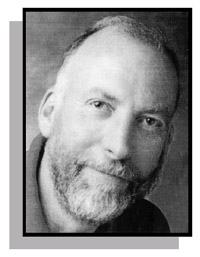Heyser Memorial Lecture
AES 116th Convention
Messe Berlin - Berlin, Germany
Sunday, May 9, 2004 - 18:00h
From Analog to Digital
by Kees A. Schouhamer Immink, Fellow AES
Abstract
 In 1964, the inventor of the pulse code modulation (= digital data transmission) system, Alec H. Reeves, wrote in an IEE article
In 1964, the inventor of the pulse code modulation (= digital data transmission) system, Alec H. Reeves, wrote in an IEE article
“Twenty-five years after its invention (in 1937), it can be said that pulse code modulation has little past as yet; the real interest is in its future. This future depends a great deal on how well, or how badly, its main planning problems are tackled during the next decades or so. There is little or no agreed view of the technical and more general points involved in this planning.”
Now, another forty years later, the ‘planning problems’ mentioned were tackled well, and humanity has witnessed the digital audio and video revolution. Digital revolutionary fruit, such as the Compact Disc, MiniDisc, DAT, DVR, DVD and so on, is less than 20 years young. New products are now on the market showing features that did not exist in the early 1980s. The DVD, introduced in 1996, has become a high-tech commodity product by now. Solid-state storage brought the perfect portable audio player, where crashes resulting from jogging are absent and power consumption is extremely low.
In retrospect one may say that the digital audio revolution is an immense success as everybody is satisfied with the outcome. With reluctance, the speaker acknowledges the fact that there are a few nostalgic exceptions, who cry out in longing to return to the fleshpots of the radio hiss, the warm distortion of the electron tubes, the scratchy sound of the gramophone, and, not to forget, the greener grass.
At this junction, almost seventy years after the invention of pulse code modulation, the audio world is in an evolutionary consolidation phase again, and it seems to be a good idea to appraise how well we fared so far. The speaker will address some historical notes on pulse code modulation, and he will show that the digital revolution rests on the scientific foundations laid by researchers at Bell Labs—Nyquist, Shannon, Hamming, to mention just a few giants-- in a period of time when the term “research project” was an oxymoron.
The speaker will deploy his glass ball to see what the future might offer.
About the speaker: Kees Schouhamer Immink, born in Rotterdam, 1946, is president and founder of Turing Machines Inc. During his career, he has contributed to the digital audio, data, and video revolution by developing coding technologies for essentially all consumer optical and magnetic recording formats such as Compact Disc, MiniDisc, DCC, DVD, and BluRay Disc.
For his many pioneering contributions to the digital revolution, he won wide recognition among his peers. Among the many honors received are an Emmy Award, IEEE Edison Medal, AES Gold and Silver Medals, IEEE Ibuka Consumer Electronics Award, SMPTE Poniatoff Gold Medal, and IEE J.J. Thomson Medal. Immink was named a Knight in the Order of Orange Nassau, elected into the Royal Netherlands Academy of Sciences (KNAW), inducted into the Consumer Electronics Hall of Fame, and named a fellow of the IEEE, AES, SMPTE, and IEE. He served the AES as a governor and VP since 1996, and was president in 2003.
